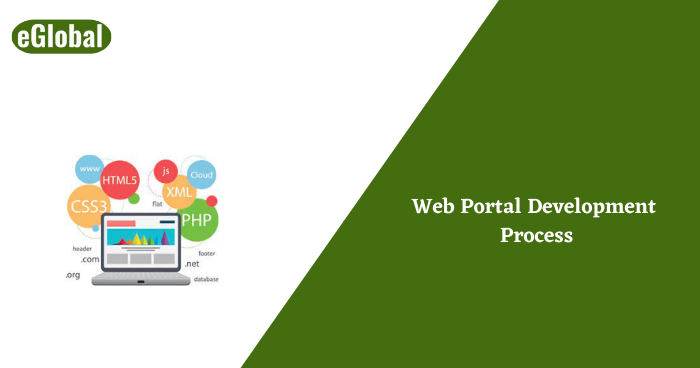

In this Article we are going to focus on web portal development process. patients, and/or members to log in and interact with your organization securely and in a more personalized manner. It will help you provide better customer service, optimize business processes, and manage easily.
Designing a web portal can open up new opportunities for your business in terms of how you share special announcements, deals, and data with stakeholders. If you’ve undertaken software modernization recently, developing one can support your operations after migrating to the cloud.
Through a web portal, you can support your customers, employees, vendors, partners, Ready to get started? Here’s your focus on what web portals are and what you’ll need to create one.
A portal is a web-based platform that aggregates information from various sources into one user interface and presents the most relevant information to the user based on their context. A web portal is a secure, online, and centralized source of organized information, and it usually requires users to log in to access their profiles. Web portals began as simple websites that were later developed into platforms that supported digital customer experience initiatives.
A web portal usually pulls details from different places and arranges them in a central location where users can access them. This data can be related or unrelated, and it can also show as ordered data, links, services, and interactive elements.
Often, portals personalize the information each user accesses to what they require to acquire inside the platform. For example, an educational institution can have separate portals for students and their parents, as in the case of Stanford University. Every user group would expect to access individual information from the other, necessitating different web-based portal setups.
The process of establishing a web portal can be challenging, even if you have some experience with it. Also, depending on the use case, you will take different steps. Therefore, it is a good idea to seek the help of a web portal development service before tackling this type of project.
There are 7 steps to create a web portal. For instance, we are going to process creating a web portal application, step by step. So, let go and see the steps!
The first step is to determine who you’re building the web portal for, why, and when. Additionally, you should specify how to make the information easily accessible and personalized to customers’ needs and secure and up-to-date.
This stage aims not only to apply web portal styling and UI/UX best practices, and a web portal architecture must also be defined and its navigation.
UI design begins with the definition of visual direction and layout. A UI/UX designer chooses a preliminary product structure and decides which guidelines to follow.
The designer will create mockups and other graphics (icons, banners, illustrations, animations, etc.) based on this information. The UI designer will also develop a reference guide and comprehensive style for the project, which allows us to expand the speed of development and maintain the visual consistency of the UI DESIGNER.
As developers, the focus is on delivering a web-accessible platform that users can use to perform different functions. There are at least a dozen tools and platforms available for developing portal solutions and applications, including:SQL databases (MySQL), NoSQL databases (Cassandra), SQL databases (Oracle), and cloud databases (AWS) Tools such as Amazon Kinesis, Azure Stream Analytics, and RabbitMQ for real-time data processing Node.js, Python, and .NET are common back-end languages used in cloud platforms such as Amazon Web Services, Rackspace, and Digital Ocean.
HTML5, Meteor, and Angular are front-end technologies commonly used with content management systems (CMSs) like WordPress, Magento, and Salesforce. There are mobile platforms such as IOS, Linux, Flutter, and Cordova. Choosing the right tool or platform depends on your goals and your past experiences with creating successful portals.
In this step, you or your users will connect all the tools they need to accomplish their goals to the portal. Depending on your use case, this may include custom software development or even SaaS products.
Before deployment, experienced developers test Portal applications to detect errors, missed requirements, or instability issues.
Piloting of the new portal application has begun with a limited number of key users. All earlier identified issues have been resolved.
It is time to open up the portal to more users and track performance in real-time if it meets your KPIs and standards. You can also use an excellent portal application development service to develop a portal that runs smoothly without wasting time, money, or damaging your reputation with users.
Every flourishing Web design team has its method. By cultivating formal procedures, a team can perfect and internalize its efficiency and thoroughness. Procedures may vary slightly from team to team or from project to project, but specific practices are common because they are effective.
Hope this Article is beneficial for you! Hire Indian developers for all your web development solutions for future projects. contact us now for more details……….

© 2017 All rights reserved.